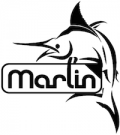Results 1 to 3 of 3
Threaded View
-
04-14-2014, 08:55 AM #1
Inexpensive Auto_Bed_Leveling compatible extruder
This extruder is being posted to help get people thinking about doing Auto_Bed_Leveling.
The .STL file is attached to make it easier to rotate and examine different parts of the design. I started with a Wade's Reloaded extruder. To help with filament changes the idler was modified to have a pointed top. The Reloaded extruder already had slots for the tension screws that can just be pulled up to quickly and easily release the idler. This one has a pointed top to make it easier to get the screws back in place and under tension. (Otherwise, the washers on the screws have to be fully compressed against the springs to get the screws in the right position. It is easier if you can get them started part way before you have to fully compress the springs)
The other change that is not related to Auto_Bed_Leveling is the large adjustable motor mount to accommodate any size of gears. I am using a very low gear ratio to get extra power (force) on my filament and to provide better resolution of the amount of material extruded.
extruder1.jpgextruder2.jpgextruder3.jpgextruder5.jpg
Now lets talk about the Auto_Bed_Leveling! You can see a rectangular cut out in the main extruder block for an inexpensive servo. You can buy a suitable servo on eBay for a few Dollar's including shipping. Go to eBay and search for "9g servo" and you will see many suitable servos listed. I'm using the Tower Pro SG90 servo. The servo's are standardized in shape and any 9g servo should fit nicely into the mounting slot.
The other Auto_Bed_Leveling piece you need on your extruder is the Z-Probe. You can see it in both the retracted and engaged position in the photographs. The Z-Probe is designed to accommodate any standard micro-switch. Once again, eBay is your friend. Search on eBay for "Roller Lever Micro Switch". There will be different styles available. You want one that looks like these: You can get 10 for $2.50 including shipping:
http://www.ebay.com/itm/10pcs-New-Mi...62766421&rt=nc
These switches are at the very bottom of the price spectrum but they are producing good results. Once again, the switches are standardized and any micro-switch of that size should slide into the Z-Probe arm. You want the switch to have three connection legs coming out of it on the opposite side of where the roller lever is. The Z-Probe arm is designed to allow connections to easily be made to the switch.
Now the important part of this discussion. The whole reason for posting this was to discuss the design of the Z-Probe arm and the extruder main block. The Z-Probe has a bump that keeps it from swinging past the 90 degree vertical line. That bump catches on the extruder's main block and stops it at the same position every time the Z-Probe is engaged. That allows the use of a very inexpensive servo. The servo can be told to go a few degrees too far and how accurately it positions itself is not really an issue.
The other nice thing about this Z-Probe design is the placement of the roller lever. First, the roller lever is deliberately designed to be on the side close to the hot end of the extruder. Ideally you want your X_PROBE_OFFSET_FROM_EXTRUDER and Y_PROBE_OFFSET_FROM_EXTRUDER to be as small as possible. The roller lever is positioned to make that the case. But the other thing worth pointing out is the roller lever is very slightly past the vertical line coming straight down from the servo's axle. What this does is create a very small rotational force on the Z-Probe arm when the roller lever is pressed. This helps press the Z-Probe arm against the end stop for the purpose of always having the probe in the same position when measurements are being taken.
Roxy's_Big_Gear_Extruder_With_Embedded_servo-v4.stl







 Reply With Quote
Reply With Quote





Ender 3 Neo - Jam Problem
Today, 03:06 PM in Tips, Tricks and Tech Help